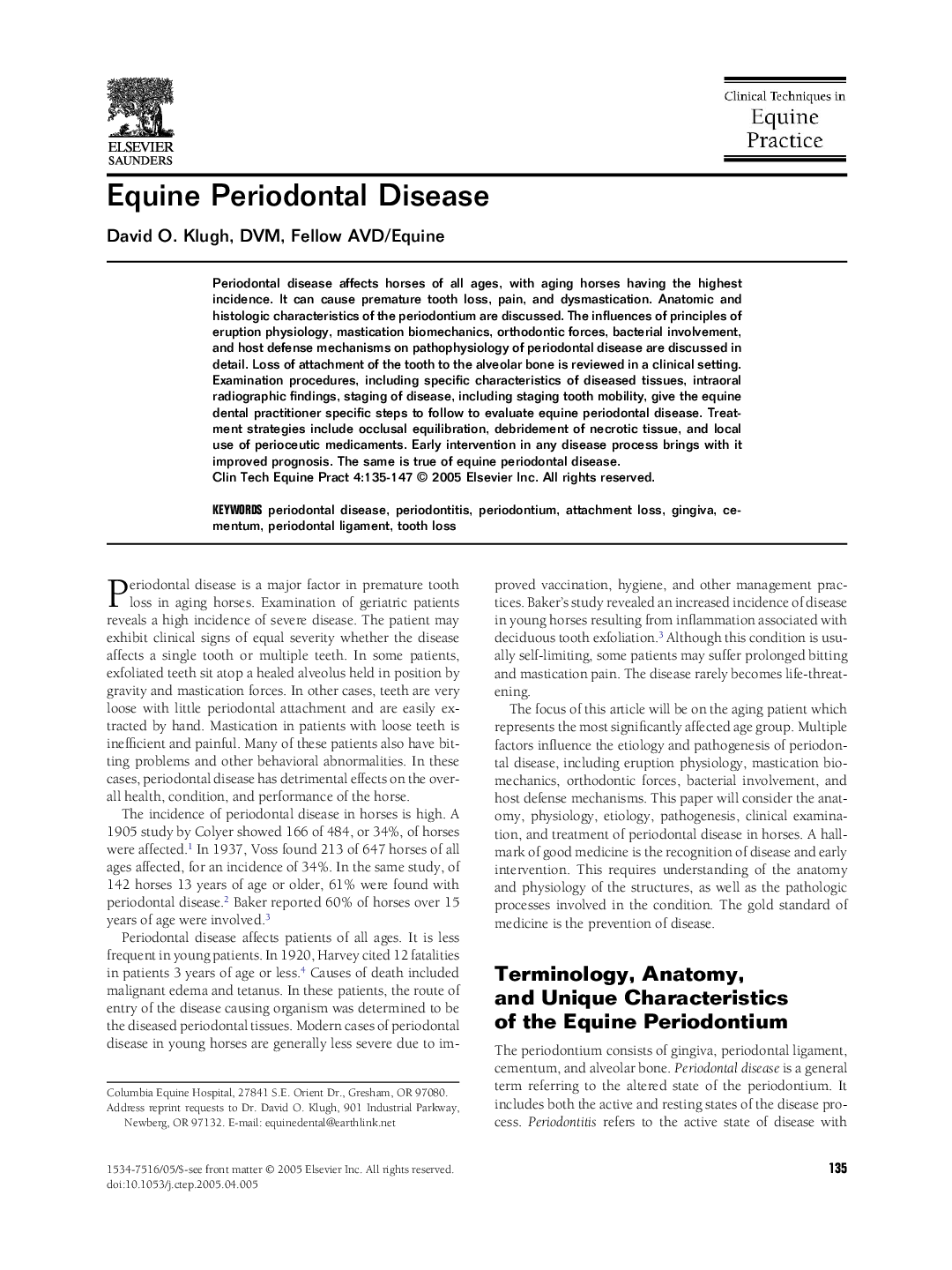| Article ID | Journal | Published Year | Pages | File Type |
|---|---|---|---|---|
| 8966710 | Clinical Techniques in Equine Practice | 2005 | 13 Pages |
Abstract
Periodontal disease affects horses of all ages, with aging horses having the highest incidence. It can cause premature tooth loss, pain, and dysmastication. Anatomic and histologic characteristics of the periodontium are discussed. The influences of principles of eruption physiology, mastication biomechanics, orthodontic forces, bacterial involvement, and host defense mechanisms on pathophysiology of periodontal disease are discussed in detail. Loss of attachment of the tooth to the alveolar bone is reviewed in a clinical setting. Examination procedures, including specific characteristics of diseased tissues, intraoral radiographic findings, staging of disease, including staging tooth mobility, give the equine dental practitioner specific steps to follow to evaluate equine periodontal disease. Treatment strategies include occlusal equilibration, debridement of necrotic tissue, and local use of perioceutic medicaments. Early intervention in any disease process brings with it improved prognosis. The same is true of equine periodontal disease.
Keywords
Related Topics
Health Sciences
Veterinary Science and Veterinary Medicine
Veterinary Medicine
Authors
David O. (Fellow AVD/Equine),
